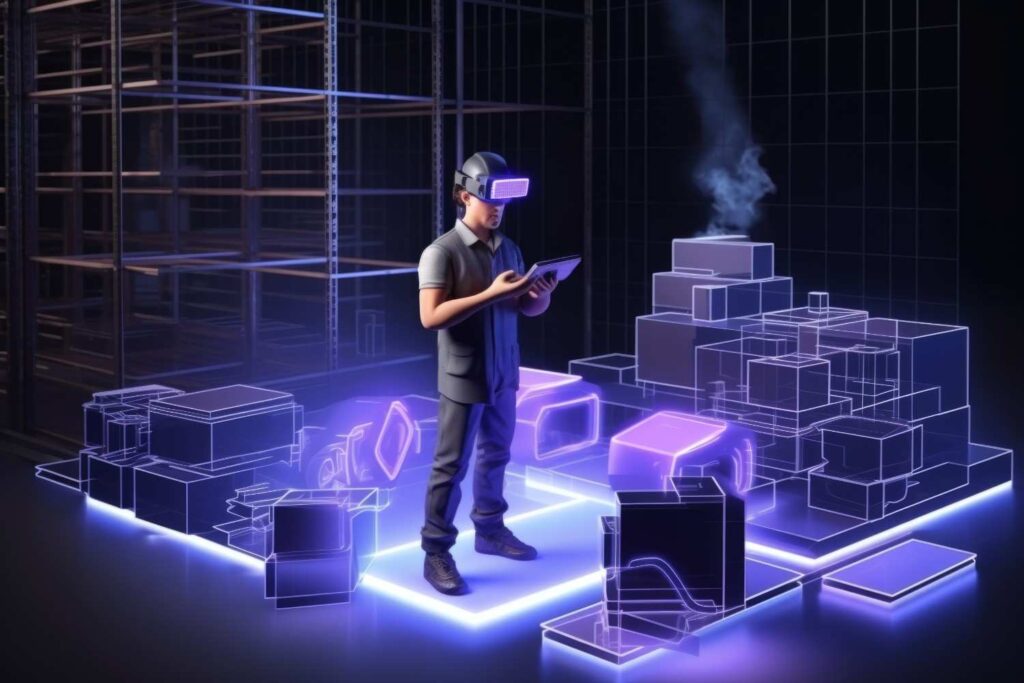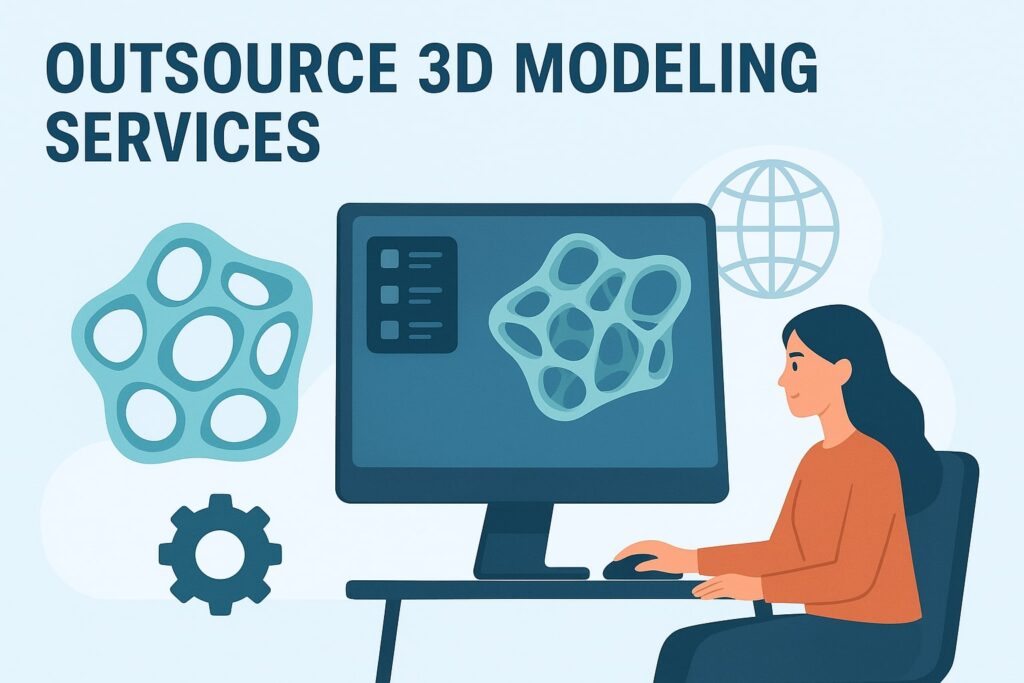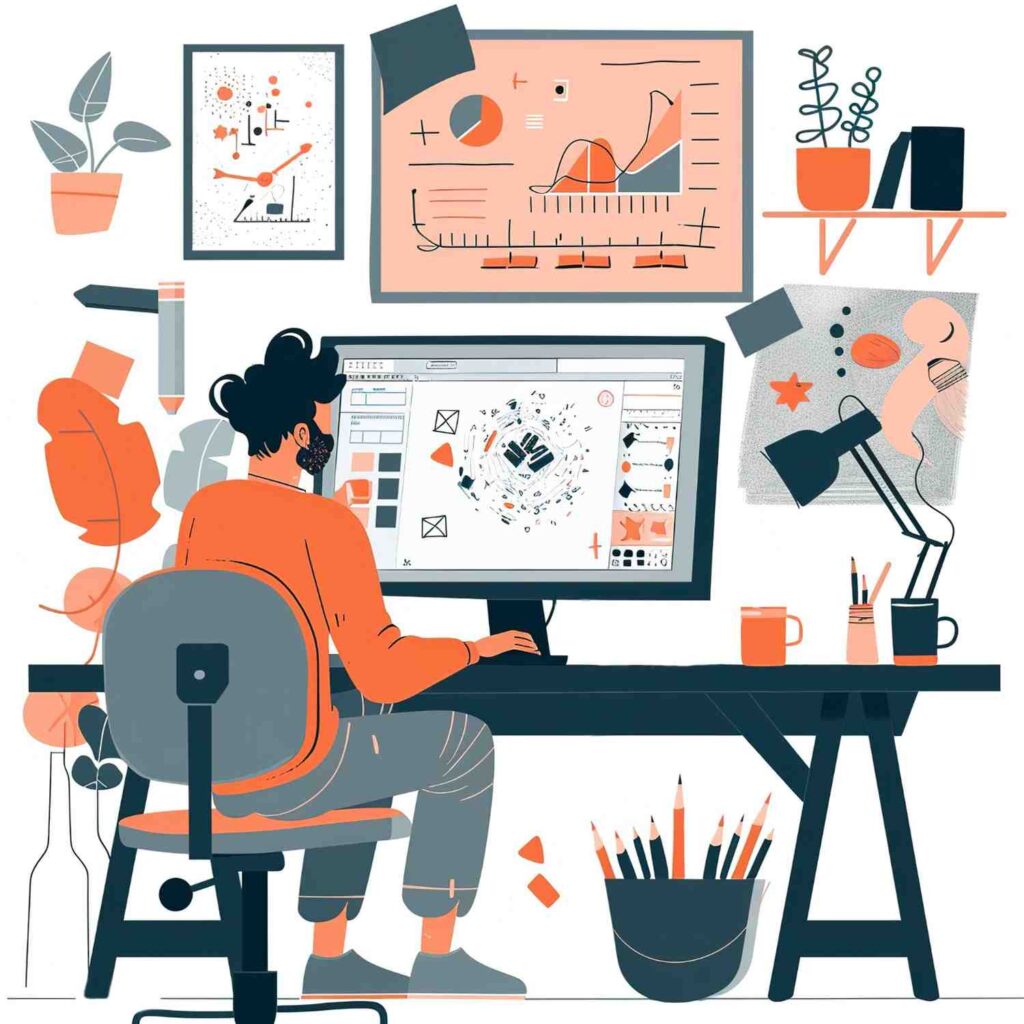OUTSOURCE CREATIVE SERVICES - OUTSOURCE CREATIVE WORKS-OUTSOURCING CREATIVE WORK - OUTSOURCE CREATIVE DESIGN -OUTSOURCE 2D ARTWORKS - 2D ART SERVICES - 2D ART OUTSOURCING -ART OUTSOURCING - OUTSOURCE ILLUSTRATION WORKS - OUTSOURCE ILLUSTRATION SERVICES - OUTSOURCE 3D MODELING - 3D MODEL OUTSOURCING- OUTSOURCING CAD WORKS- OUTSOURCE ARCHITECTURAL SERVICES -BIM - REVIT - 3D FLOOR PLAN - BIM OUTSOURCING SERVICES - MEP - REVIT MODELING - 3D FURNITURE MODELING - 3D ARCHITECTURE MODELING - AUGMENTED REALITY MODEL - VIRTUAL REALITY MODEL - 3D RENDERING - PRODUCT MODELING - 2D SERVICES - OUTSOURCE CREATIVE SERVICES -3D MODELING SERVICES - VFX
The Competitive Advantage of Outsourcing 3D Modeling & Rendering
The digital economy of 2026 has officially hit a tipping point. The shift from static imagery to interactive, three-dimensional content is no longer a luxury—it is an operational mandate. Today’s consumers don’t just want to look at a product; they want to experience it. They expect to spin a sofa 360 degrees, swap velvet for leather in a millisecond, and virtually "place" that furniture in their actual living room using Augmented Reality - Virtual Reality (AR/VR).

As the demand for high-fidelity content explodes, brands are facing a hard truth: maintaining an in-house studio capable of professional-grade 3D Rendering and Texturing is a monumental financial and logistical burden. This is why global leaders are increasingly choosing to Outsource 3D Modeling services.
By partnering with specialized firms like Outsource 3D Modeling, businesses are transforming their creative production from a costly bottleneck into a high-speed engine of innovation. From 3D Product Design to complex 3D Architecture, here is why outsourcing has become the definitive choice for the modern era.
I. The Technical Divide: Why Internal Teams Struggle
The gap between a "basic 3D shape" and a "photorealistic digital twin" is vast. Achieving the latter requires a level of technical rigor that few generalist marketing teams can sustain.
1. The Science of Photorealistic Texturing 💡
Realism is defined by how light interacts with a surface—a phenomenon controlled entirely by Texturing. In 2026, the industry standard is Physically Based Rendering (PBR). This workflow involves creating a suite of complex maps (Albedo, Normal, Roughness, and Metallic) that simulate real-world physics.
- Niche Expertise: Achieving the perfect grain on a walnut table or the subtle sheen of brushed aluminum requires a scientific understanding of material optics. Outsourced specialists focus exclusively on these materials, ensuring your digital products look indistinguishable from physical ones.
- Consistency: When you Outsource 3D Modeling services, you ensure that a specific fabric or finish looks identical across all platforms—whether it’s in a static high-res 3D Rendering or an interactive AR viewer.
2. High-Performance 3D Rendering Infrastructure 🖥️
Rendering is the most computationally expensive part of the digital pipeline. A single high-resolution "hero shot" can take hours to process on a standard workstation.
- Eliminating Capital Investment: Building an internal "render farm" requires a massive investment in high-end GPUs, cooling systems, and specialized software licenses.
- On-Demand Power: Outsourcing partners provide instant access to industrial-strength rendering power. This turns a massive fixed capital cost into a flexible, project-based operational expense.
II. Strategic Advantages Across Key Industries
The shift toward outsourcing is driven by distinct, high-impact benefits across major visualization domains.

3. Outsource 3D Furniture Modeling for E-Commerce 🛋️
The furniture industry faces a unique challenge: managing thousands of SKUs with endless material and finish variations.
- Virtual Staging: Outsourcing eliminates the logistical nightmare of shipping and staging physical furniture for photoshoots. One master model can be digitally placed in a rustic loft, a modern penthouse, or a cozy suburban home instantly.
- Infinite Customization: Through 3d modeling and design, brands can showcase every fabric and color option in their catalog without ever manufacturing a single prototype. This "sell-before-you-build" approach drastically reduces inventory risk.
4. Precision in 3D Product Design ⚙️
For consumer electronics and manufacturing, 3D models must be both aesthetically stunning and technically accurate.
- CAD to 3D Conversion: Many brands have technical CAD drawings but lack the artistic skills to make them "marketing-ready." Outsourced firms specialize in taking complex engineering data and applying professional Texturing to create stunning visuals for ads and packaging.
- Prototyping Speed: Digital iterations allow designers to see and feel the product virtually, reducing the need for costly physical prototypes and accelerating the entire development cycle.
5. Immersive 3D Architecture and Real Estate 🏢
In 3D Architecture, the goal is to sell a vision long before ground is broken.
- Interactive Walkthroughs: Outsourced specialists create fully immersive environments that potential buyers can explore via VR headsets or web browsers.
- Environmental Detailing: Creating a realistic neighborhood—complete with swaying trees, moving cars, and natural sunlight—is a specialized skill. Outsourced firms maintain libraries of these high-quality assets to populate architectural scenes quickly and realistically.
III. Future-Proofing for Augmented Reality - Virtual Reality
The single most significant trend in 2026 is the integration of AR into the daily shopping journey. However, a model used for a high-res print ad is fundamentally different from one used for mobile AR.

6. The "Low-Poly" Technical Barrier 📱
Augmented Reality - Virtual Reality platforms (like iPhone’s ARKit or Android’s ARCore) require models that are extremely "light" to run smoothly in real-time without lagging.
- Retopology and Baking: Specialists must "retopologize" a high-poly model—reducing the polygon count while "baking" the high-detail textures into the low-poly mesh.
- Cross-Platform Compliance: Outsourcing partners ensure your assets are pre-validated for formats like USDZ and GLB, guaranteeing a lag-free experience for your customers.
7. The "Follow-the-Sun" Workflow ⏱️
Speed to market is a competitive differentiator. By utilizing partners in different time zones, brands achieve a continuous production cycle.
- 24/7 Productivity: An in-house team can send feedback at 5 PM, and by 9 AM the next morning, the updated 3D Rendering or 3D Furniture Modeling assets are ready. This effectively cuts project timelines in half.
IV. Conclusion: The Digital Future is 3D
The transformation of the digital product experience is not just about "looking better"—it is about functioning better for the consumer. By choosing to Outsource 3D Modeling services, brands gain the agility to scale their collections, the technical precision to dominate AR/VR platforms, and the visual quality to win consumer confidence.
In a world where the digital twin is often the first point of contact between a brand and a buyer, high-quality 3d modeling and design is no longer a luxury—it is the heartbeat of modern commerce.
❓ Frequently Asked Questions (FAQs)
1. What is the difference between 3D modeling and 3D rendering?
3D modeling is the process of creating the "mathematical" 3D skeleton of an object. 3D Rendering is the final step where textures, lighting, and environments are added to create a realistic 2D image or animation from that 3D model.
2. Why should a furniture brand prefer Outsource 3D Furniture Modeling over photography? Outsourcing is more cost-effective for large catalogs. It allows you to change fabrics, wood types, and lighting instantly on a single model, whereas photography requires shipping a new physical product and resetting a studio for every variant.
3. How does Texturing affect the quality of an AR/VR experience?
In Augmented Reality - Virtual Reality, the model must be lightweight. Expert Texturing (specifically PBR texturing) allows an artist to "bake" high-quality details onto a simple model, making it look incredibly realistic without slowing down the user's phone or headset.
4. What is the benefit of 3D Architecture for real estate developers?
It allows developers to sell units before construction is finished. High-quality 3D Rendering and VR walkthroughs help buyers visualize the final space, material finishes, and views, significantly accelerating the pre-sale process.
5. Is 3D Product Design only for final marketing images?
No. 3D modeling is used throughout the workflow—from initial concept sketching and functional prototyping to packaging design and assembly animations. It reduces the need for expensive physical mock-ups.
6. Can outsourced 3D Modeling services handle my high-volume e-commerce catalog?
Yes. Specialized outsourcing firms are built for scale. They use standardized workflows and global teams to produce thousands of models and renders per month, providing a level of speed and consistency that in-house teams often cannot match.










